Things You'll Need
Pot
Stovetop
Spoon
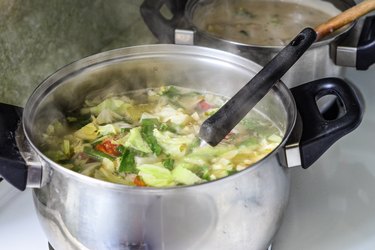
Simmering homemade stocks, broths and soups allows time to extract flavors from the ingredients and infuse them into the soup. The heat, when simmering, is barely below or just at boiling so the liquid has small bubbles around the edges of the pan. Occasionally a bubble or two will break the surface. In contrast, a full rolling boil has large bubbles that can't be stirred down. Stirring exposes the surface of the liquid to cooler temperatures which lowers the temperature of the liquid. Simmering a soup is not a difficult task.
Broth-Based Soups
Step 1
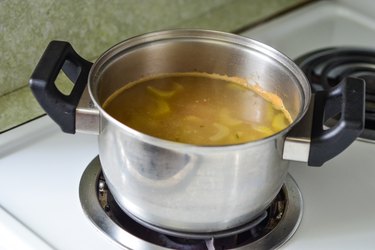
Place the pot of soup on the cook top. Broth is mostly water and flavoring. The other ingredients of the soup, such as vegetables and meat, are surrounded by water so there's little danger of them burning while boiling.
Video of the Day
Step 2

Turn the burner to high. When the broth starts to boil -- bubbles actively breaking the surface of the water -- lower the heat to medium. The bubbles should decrease in activity.
Step 3
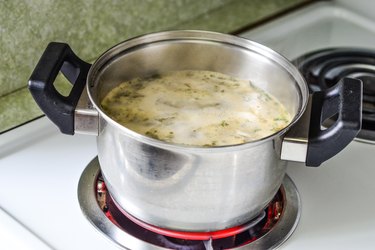
Decrease the heat to low if the bubbles are still active. The soup should be just below or at the boiling point. Distilled water boils at 212 degrees Fahrenheit at sea level. Salted water boils at a few degrees higher depending upon how much salt it contains. Most soups have salt in them so the boiling point will be higher than water.
Step 4

Cover the pot and continuing simmering as the soup recipe directs. Covering the pot retains heat so the soup may begin to boil again rather than simmer. Check after 10 minutes by lifting the cover. Lower the heat further until the boiling stops and the soup simmers.
Cream Soups
Video of the Day
Step 1

Put the pot of cream-based, or thickened soups, on medium-low heat. Soups are sometimes called cream even if there is no milk-based product in them. The soup is thickened so it has a creamy texture. Stir once every 10 seconds or so until the soup comes to a slow boil. Cream, or thick soups, will burn if you don't stir them.
Step 2
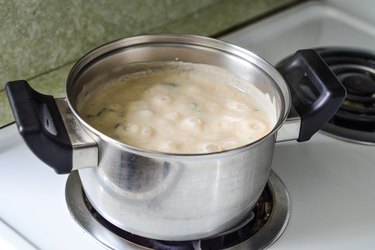
Turn down the heat to low as soon as you see bubbles surfacing. Bubbles should be coming to the surface but not very vigorously. Continue to stir every few minutes while the soup simmers.
Step 3
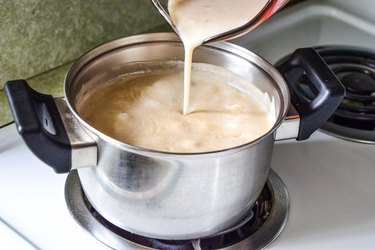
Simmer cream and thick soups for only a few minutes. Cream is usually added at the last minute so you have to simmer the soup to get the cream hot. Thickened soups made with flour or cornstarch only require enough simmering to cook the raw flour or cornstarch taste away, perhaps three or four minutes.
Tip
The technique of simmering soup works with beef, vegetables and chicken.
Warning
Simmering soup, while not at the boiling point, is still hot enough to burn.